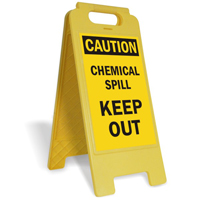There’s too much potential for dangerous situations in the workplace. Fire breakouts, electrical short circuits, exposure to extreme temperatures etc. are examples of possibly perilous situations. However, organizations typically have preventative procedures in place to counteract these hazards.

But imagine tripping and falling on a wet floor at work and ending up with a fracture that takes away 24 workdays out of an employee’s calendar; or enduring a disability lawsuit. Can an energy control system heal a broken limb? Will a fire safety procedure be applicable in this situation?

Deriving solutions to tripping and falling requires considering the issues respective to the situation. Problems related to tripping and falling at the workplace requires a solution of its own that cannot be provided by any other safety procedure incorporated by an organization.

OSHA, a part of the U.S Department of Labor reveals that
trips, slips and falls (STF) make for 15 percent of the total accidental fatalities and are a close second to motor vehicle accidents. The magnitude of the fatalities indicate the lack of proper precautionary and curative measures implemented by companies and the need to address the issue of slips, trips and falls at workplaces more seriously.














